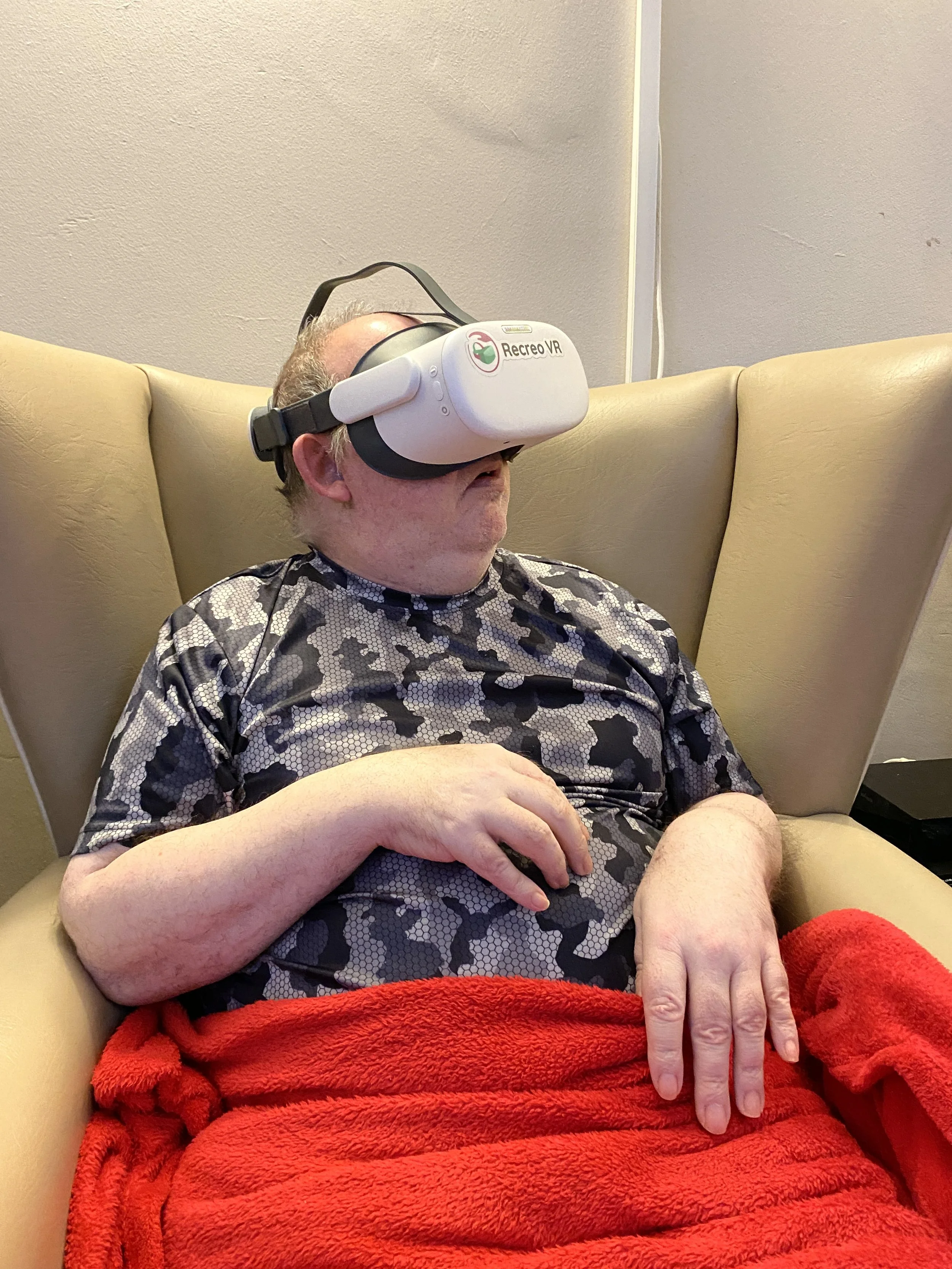The role of Virtual Reality (VR) in developing life skills for people with learning disabilities
Virtual Reality (VR) is transforming how people with learning disabilities experience the world, helping them build essential life skills, grow in confidence, and gain more independence.
Across care homes and supported living settings, VR is being used to create realistic, interactive environments that allow residents to safely explore new experiences and practise real-world tasks. From learning how to navigate busy supermarkets to building social confidence in group settings, VR is emerging as a valuable assistive technology for care providers and a promising area for investors.
Building life skills through immersive learning.
For people with learning disabilities, learning practical life skills often requires repetition, guidance, and confidence-building. Traditional teaching methods can sometimes fall short when real-world settings feel overwhelming or unpredictable.
With Virtual Reality, individuals can enter lifelike simulations of everyday environments and practise tasks step by step in a controlled and supportive space. This approach makes learning more engaging and effective, helping people develop independence in a way that feels safe and enjoyable.
Supporting confidence and wellbeing.
For many residents, new experiences can trigger anxiety, particularly in busy or unfamiliar places. VR offers a bridge between the comfort of a care environment and the realities of the outside world.
By gradually introducing sound, movement, and crowds, VR therapy helps users build tolerance and confidence over time. For example, someone practising a bus journey might start in a quiet virtual street and then progress to busier routes as they become more comfortable.
Care staff have reported noticeable improvements in residents’ mood, motivation, and willingness to try new activities after VR sessions. These experiences give people a sense of achievement and boost their overall well-being.
A growing area of innovation and investment.
The use of virtual reality for learning disabilities and care settings is gaining momentum globally. Research continues to highlight how immersive technology supports cognitive, social, and emotional development.
In the UK, care homes and supported living providers are increasingly exploring VR as part of their digital transformation strategies. This trend not only improves outcomes for residents but also positions forward-thinking providers as innovators in assistive technology.
For investors, this represents a sector with clear growth potential. As adoption increases, the demand for tailored VR content and training support will continue to expand, creating new opportunities across health, education, and care markets.
As technology continues to evolve, VR will play an even greater role in promoting inclusion, learning, and independence for people with learning disabilities. For care homes and organisations exploring new ways to enhance resident wellbeing and staff development, virtual reality offers a proven, future-focused solution.
Speak to our team to book a demo or explore further how VR can improve your health care environment.


